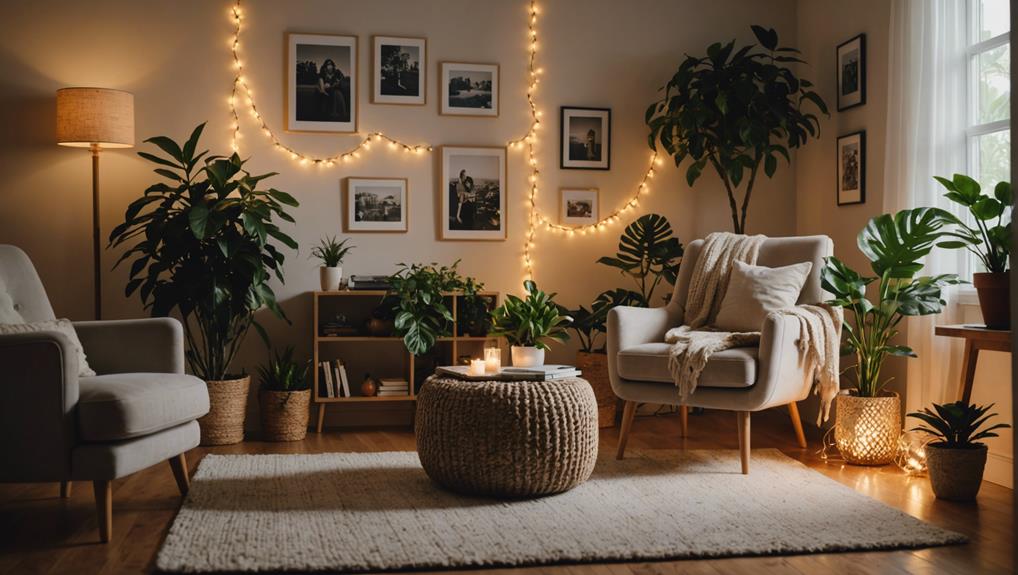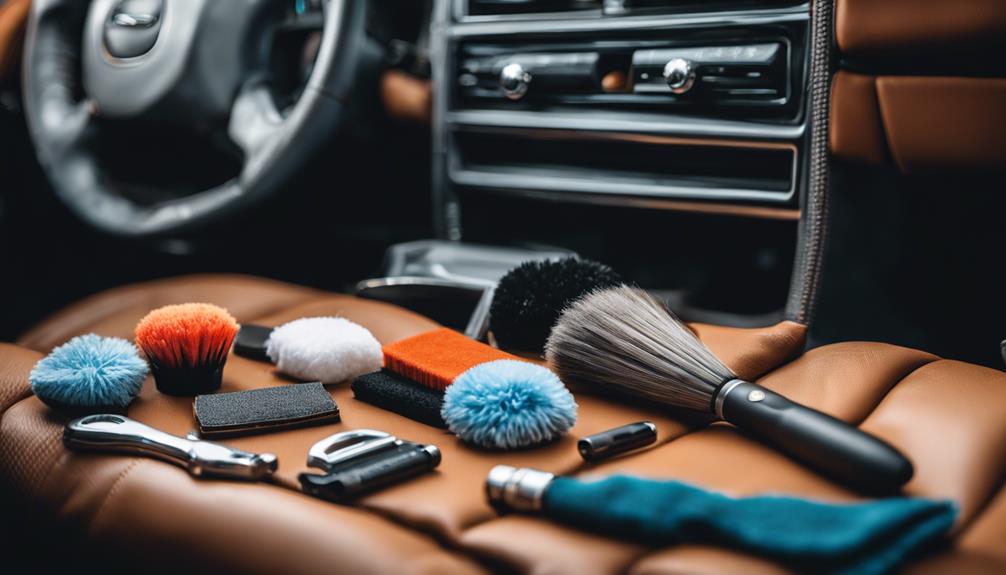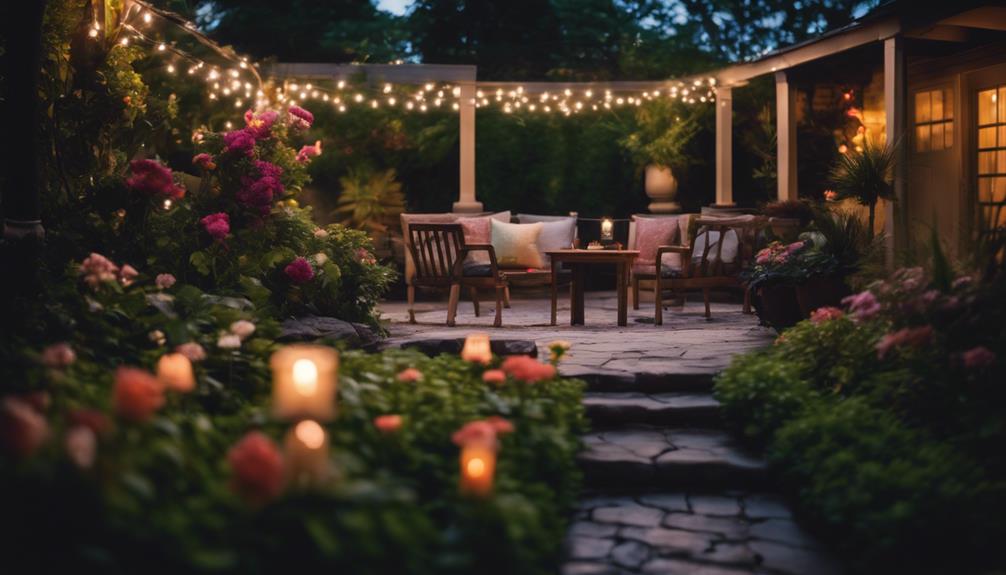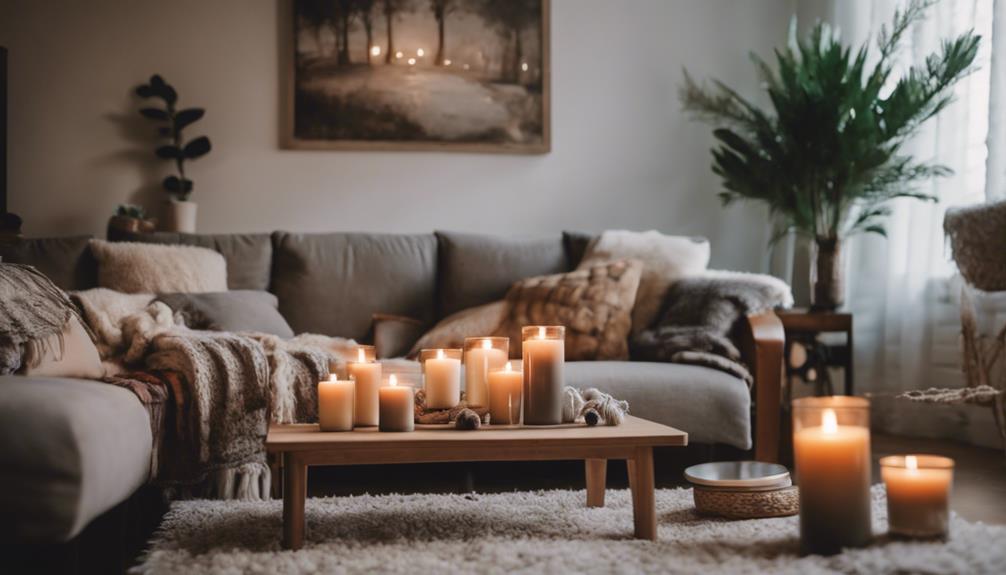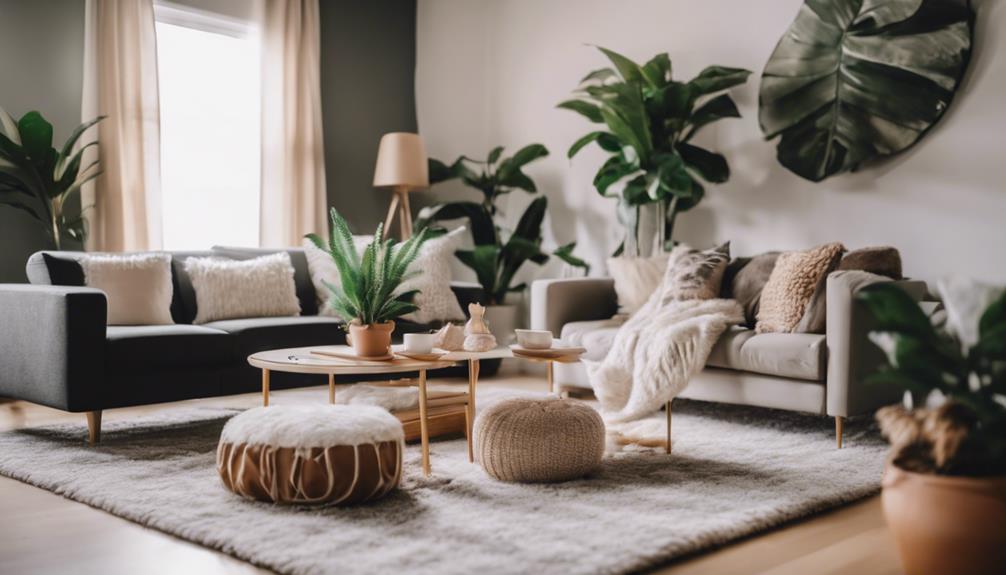Home decor lighting fixtures are crucial for enhancing the atmosphere in your living spaces. They help create a warm and inviting environment, provide energy efficiency, and are available in different styles such as pendant lights and string lights. Having a good grasp of lighting design principles is essential for achieving a well-lit space, with options for ambient, task, and accent lighting. Your personal style should also influence your choice of fixtures to match your aesthetic preferences. Take into consideration the specific lighting needs of each room, such as incorporating both ambient and task lighting in the living room or prioritizing task lighting in the kitchen. Opting for energy-efficient LED lights is a wise decision for both cost savings and sustainability. Explore how you can transform your space with smart lighting choices.
Key Takeaways
- Home decor lights enhance ambiance and visual appeal in living spaces.
- They create a warm and inviting atmosphere through various lighting options.
- Energy efficiency, especially with LED lights, is crucial for cost savings and sustainability.
- Different types like pendant lights and string lights transform spaces uniquely.
- Understanding lighting design principles like layering and color temperature is essential for a well-lit environment.
Importance of Home Decor Lights
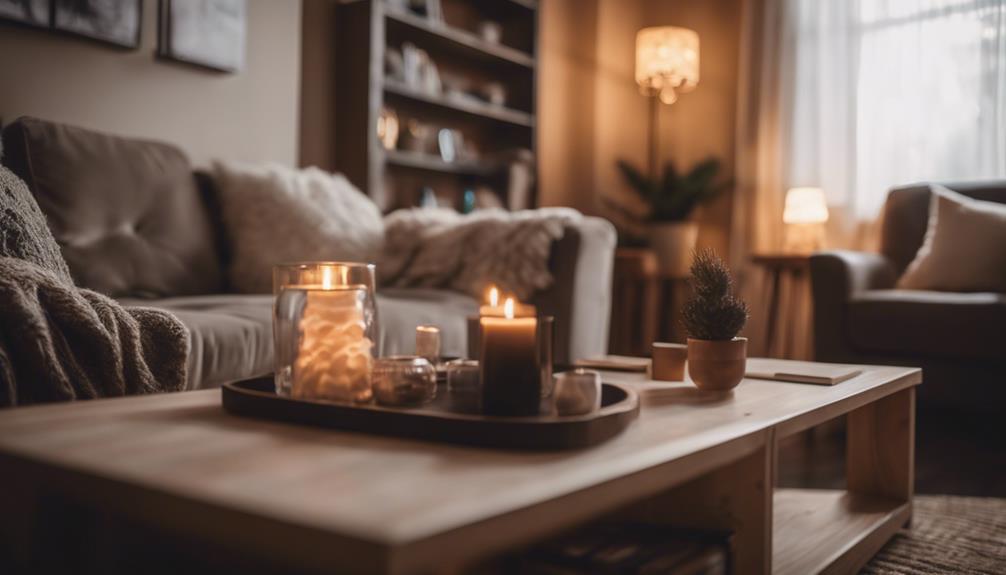
Home decor lights play a vital role in enhancing the ambiance and visual appeal of your living spaces. Proper lighting is essential for creating a warm and inviting atmosphere in your home.
Ambient lighting, in particular, helps in setting the mood and providing a cozy feel to different areas of your house. When selecting home decor lights, it's important to take into account energy efficiency.
Opting for LED lights not only aids in reducing energy consumption but also guarantees long-lasting performance.
Types of Home Decor Lights
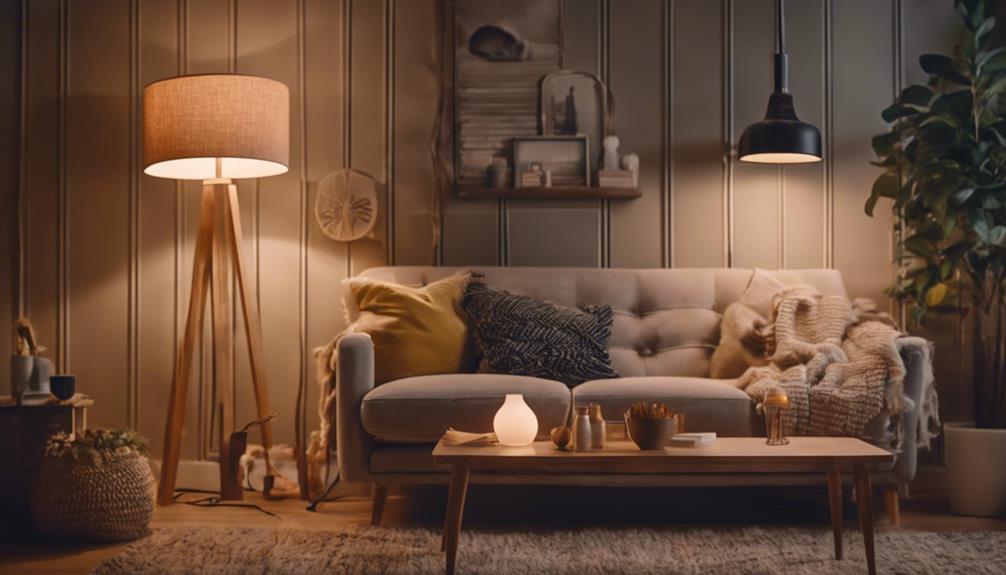
When considering the types of home decor lights, think about the various lighting styles and placement tips that can transform your space.
Pendant lights, table lamps, wall sconces, and string lights all offer unique ways to illuminate and enhance different areas of your home.
Understanding how each type of light functions and where to place them can help you create a well-lit and visually appealing environment.
Lighting Styles
Pendant lights, table lamps, wall sconces, and string lights are distinctive types of home decor lights that infuse rooms with their unique charm and functionality.
Pendant lights act as striking centerpieces, offering stylish illumination and focal points.
Table lamps add warmth and ambiance, contributing to a cozy atmosphere in a room.
Wall sconces, as decorative fixtures, bring elegance and charm to walls, enhancing the overall aesthetic.
String lights create a magical ambiance, perfect for adding a touch of enchantment to any space.
Each type of home decor light offers its own charm and character, catering to diverse design preferences and lighting requirements.
Placement Tips
For ideal aesthetics and functionality, consider strategically placing different types of home decor lights throughout your space.
Pendant lights can be used as striking centerpieces, drawing attention and adding a focal point to the room.
Table lamps are perfect for creating a cozy atmosphere, providing warmth and ambiance.
Wall sconces serve a decorative purpose, enhancing the walls with style and flair.
If you want to create a magical ambiance, string lights offer an enchanting touch.
Each type of home decor light contributes uniquely to the overall design aesthetic of a room.
Remember to balance ceiling lights, accent lighting, table lamps, and pendant lights to achieve a harmonious and well-lit space.
Lighting Design Principles
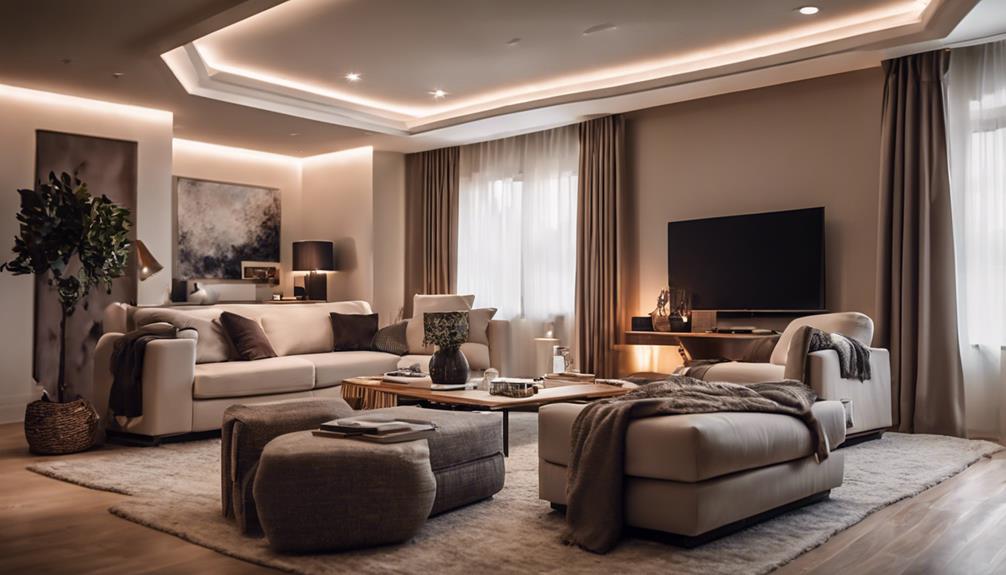
To create a well-balanced and visually appealing home decor lighting design, incorporating layered lighting with ambient, task, and accent lights is essential.
Ambient lighting serves as the base layer, providing overall illumination to the room.
Task lighting focuses on specific areas where activities like reading or cooking take place, ensuring adequate brightness for the task at hand.
Accent lighting adds depth and highlights architectural features or decor elements, creating visual interest.
Understanding color temperature is vital as it influences the mood and ambiance of different spaces within your home.
Utilizing dimmer switches allows for customizable light intensity, adapting to various activities or times of day.
Opting for energy-efficient LED lights not only reduces energy consumption but also offers longevity and cost-effectiveness.
Following these lighting design principles enhances the aesthetic appeal of your space while providing functionality and versatility.
Personal Style Reflection
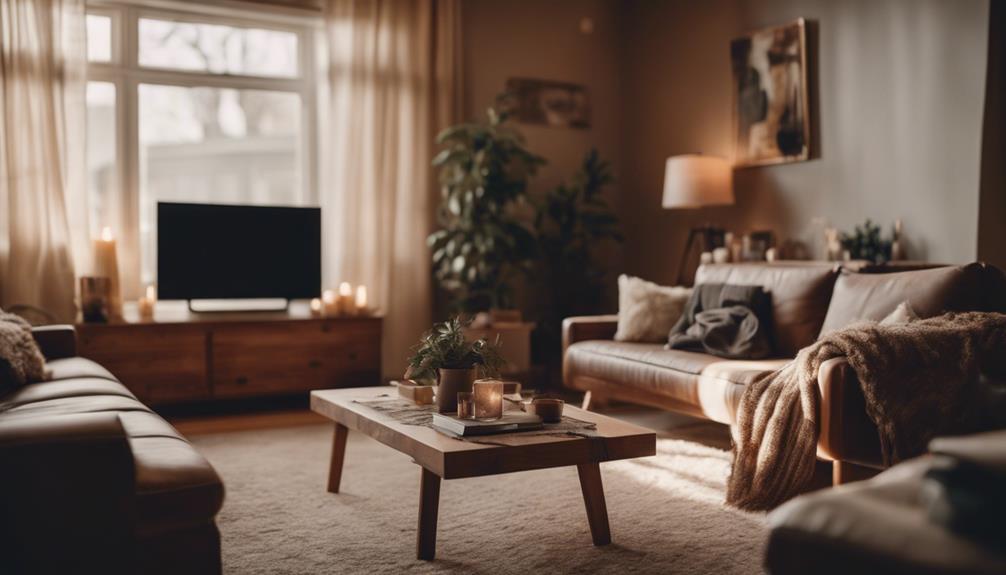
Reflecting your personal style through home decor lights is a creative way to infuse your unique taste into your living space. When considering personal style reflection in your interior design choices, home decor lights play an essential role. Here are four key points to keep in mind:
- Express Yourself: Choose lighting fixtures that resonate with your personal style, whether it's modern, traditional, eclectic, or minimalist.
- Set the Mood: Home decor lights contribute immensely to the ambient mood of a room. Consider the type of atmosphere you want to create and select lighting that aligns with that vision.
- Incorporate Decorative Elements: Different types of home decor lights, such as pendant lights, table lamps, and wall sconces, can serve as decorative elements that enhance the overall aesthetic of your space.
- Create Magic: Lighting design has the power to transform a room and create a magical and enchanting atmosphere. Experiment with different lighting arrangements to find the perfect balance.
Room Purpose Considerations
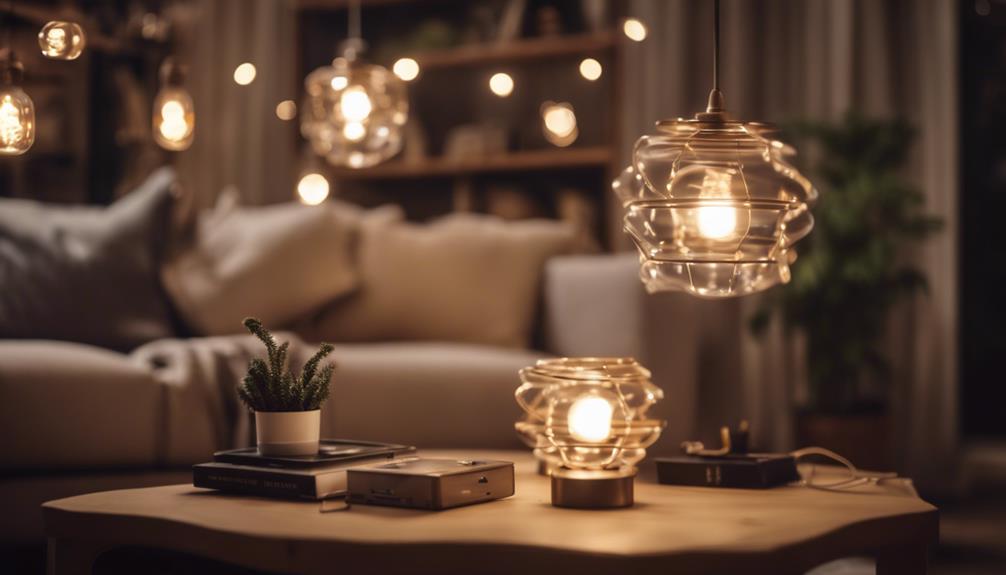
Considering the purpose of each room, selecting the right combination of home decor lights is vital for creating a functional and inviting space.
In the living room, it's important to mix ambient lighting to provide overall illumination with task lighting to focus on specific areas like reading nooks or artwork.
For the kitchen, prioritize task lighting to enhance cooking areas and make food preparation efficient.
In the bedroom, a blend of ambient lighting for a cozy atmosphere and task lighting for activities like reading is ideal.
In the bathroom, choose fixtures that offer ample light for grooming tasks.
Experimenting with light temperature, whether warm or cool tones, can help set the desired ambiance in each room. By considering these factors and selecting the appropriate fixtures, you can make sure that your home decor lights not only illuminate but also enhance the functionality and mood of each space.
Energy Efficiency in Lighting
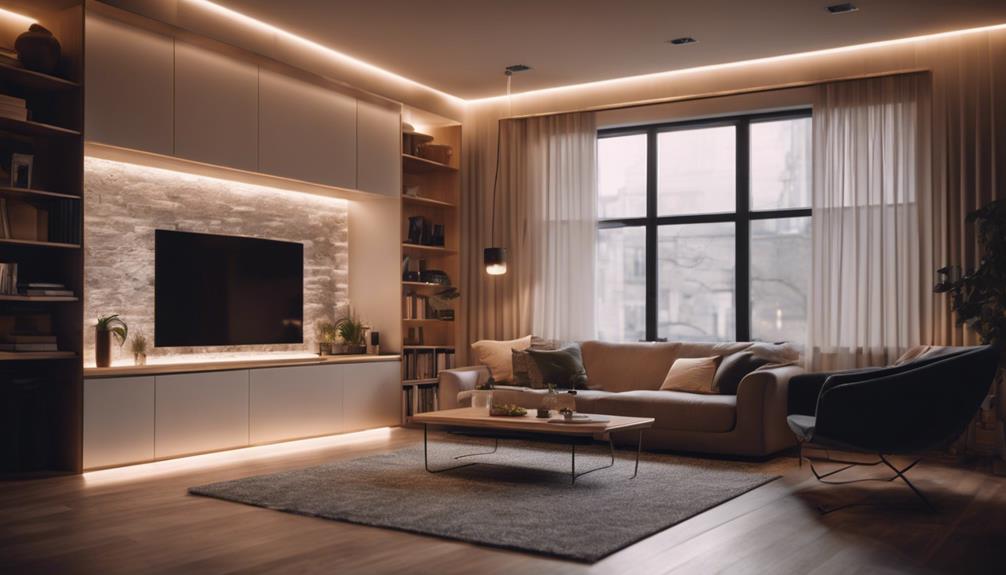
LED lights, known for their high energy efficiency, are a popular choice for reducing electricity consumption in homes. When considering lighting options, here are some key points to keep in mind:
- Energy Efficiency: LED lights are highly energy-efficient, consuming less power than traditional lighting options. This efficiency translates to lower electricity bills and reduced overall energy consumption.
- Long Lifespan: LED lights have a longer lifespan compared to incandescent bulbs. This longevity means fewer replacements are needed, saving both money and resources.
- Heat Emission: Energy-efficient lighting fixtures like LEDs produce less heat. This not only helps in maintaining a comfortable living environment but also contributes to energy conservation.
- Environmental Impact: Choosing energy-efficient lighting solutions like LEDs can positively impact the environment by reducing carbon emissions. By making this eco-conscious choice, you're contributing to a greener and more sustainable world.
Enhancing Living Environment
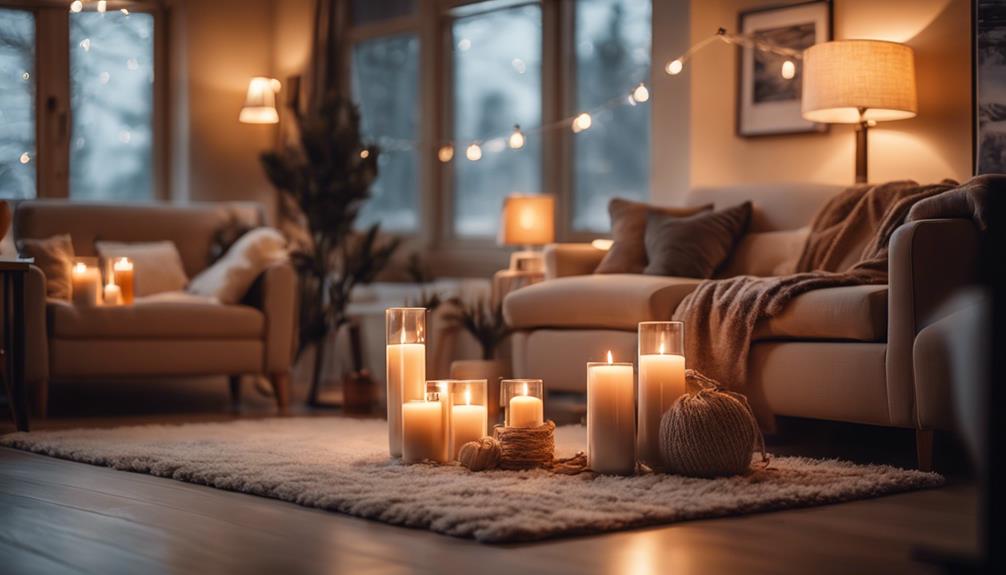
To enhance your living environment with home decor lights, consider using different light sources to set the mood, such as soft warm lights for cozy evenings or bright task lighting for focused activities.
Placement of lights is vital; for instance, pendant lights above a dining table can create a stylish focal point, while wall sconces can add depth and texture to a room.
Mood-Setting With Lights
How can home decor lights enhance the mood and ambiance of your living environment? By incorporating various lighting elements strategically, you can transform the feel of your space.
- Layered Lighting: Combining different types of lights such as overhead, task, and accent lighting creates depth and dimension in a room.
- Color Temperature: Choosing warm or cool light hues can influence the ambiance. Warm tones create a cozy atmosphere, while cooler tones offer a more invigorating feel.
- Dimmers: Controlling the brightness of your lights with dimmers allows you to adjust the intensity based on the desired mood.
- Fixture Selection: From pendant lights to floor lamps, selecting fixtures that complement your decor style can enhance the overall aesthetic appeal.
Ambiance Transformation Tips
Enhance the ambiance of your living environment by implementing effective ambiance transformation tips using home decor lights. Different lighting fixtures play an important role in transforming the atmosphere of your home. Task lighting, like table lamps and wall sconces, serves specific purposes such as reading or highlighting decorative elements.
Accent lighting, including pendant lights and string lights, adds depth and emphasizes features in your decor. By strategically combining ambient, task, and accent lighting, you can create a well-layered lighting design that enhances the overall feel of your living space.
Consider using a variety of lighting options, from chandeliers to outdoor fixtures, to add charm and functionality to different areas of your home. Experiment with different placements and styles to achieve the ambiance you desire.
Lighting Placement Ideas
For an enchanting living environment, consider strategically placing pendant lights as stunning centerpieces to enhance the overall ambiance of the room. When enhancing your living space with lighting fixtures to guarantee a cozy atmosphere, keep these suggestions in mind:
- Ceiling Fan: Install a ceiling fan with integrated lighting to combine functionality and illumination effectively.
- Bedside Tables: Place matching table lamps on bedside tables to create a balanced and harmonious look in the bedroom.
- Fairy Lights: Use fairy lights to add a magical touch to any room, such as draping them along shelves or framing a mirror.
- Lighting Fixtures: Experiment with different lighting fixtures to ensure each area of the room is well-lit, creating depth and visual interest throughout the space.
Frequently Asked Questions
What Is a Decor Light?
A decor light is a lighting fixture that enhances a room's aesthetic appeal. These lights, like chandeliers, pendants, table lamps, and wall sconces, create different atmospheres. They can be used for ambient, task, or accent lighting, or as focal points.
LED decor lights are energy-efficient and customizable to suit various room purposes and styles. Overall, decor lights add beauty and functionality to your living space, making it more inviting and visually appealing.
What Is the Purpose of Decorative Lighting?
Decorative lighting serves to enhance interior decor by adding sheen and brilliance to the design. It creates captivating focal points in a room and infuses a romantic flair into decorations. It imparts dramatic allure to tablescapes and other areas through fixtures like pendants, chandeliers, and sconces.
LED light centerpieces offer versatile decoration options, while battery-operated LED candles provide a mesmerizing flickering effect for ambiance.
What Are the 4 Types of Lighting?
Ambient lighting, task lighting, accent lighting, and decorative lighting are the four main types.
Ambient lighting sets the overall mood, task lighting is for specific activities, accent lighting highlights features, and decorative lighting serves both functional and aesthetic purposes.
Each type plays an essential role in creating a well-lit and visually appealing space.
Which Is Used in Decorative Lights?
Decorative lights often use energy-efficient LED technology for long-lasting performance. LED lights are commonly used in various types of decorative lighting fixtures like sconces, pendants, and chandeliers.
LED lights in decorative fixtures can enhance interior decor instantly by adding sheen and brilliance to the lighting design. LED light centerpieces are a popular choice for creating enchanting focal points and infusing romantic flair into decorations.
LED candles provide a wide array of realistic flameless options, including pillar candles, taper candles, and tealight candles, perfect for decorative use.
Conclusion
To sum up, home decor lights play a vital role in enhancing the ambiance and functionality of your living space. By understanding the different types of lights available, considering design principles, reflecting personal style, and taking into account the purpose of each room, you can create a well-lit and inviting environment.
Additionally, focusing on energy efficiency not only reduces utility costs but also contributes to a more sustainable living environment. Make sure to choose the right lights to illuminate your home beautifully.
